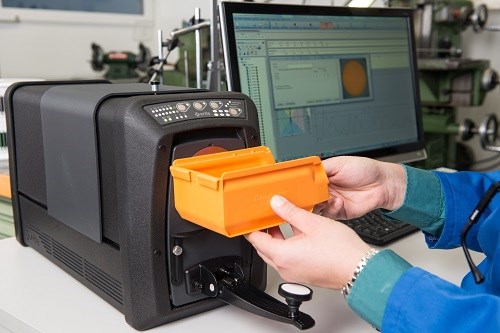Addressing Color Management Issues
X-Rite is tackling a variety of issue in color management in its new blog.

I thought it worth blogging about an interesting new blog recently launched by one of the leading players of color measurement systems, X-Rite Pantone of Grand Rapids, Mich. With color such an integral part of a plastic product’s appeal, having a blog that is devoted to issues of color management can only be a plus. So here, is an abbreviated version of some issues already discussed—or, blogged about, by X-Rite pros:
Color Perception: The Impact in Manufacturing
Here, X-Rite takes a detailed look at the science of color in manufacturing and photography. How does an object’s reflective and absorptive properties or viewing technology impact the colors we perceive? The colors an object absorbs and reflects is determined by its material—is it plastic, metal, or fabric? What are the dyes or inks used to “color” it? Changing the material of the object or the formulation of dyes and inks will change the reflective values, and therefore color we see.
10 Tips for Visually Evaluating Color
Judging color is more than just measuring samples with a color measurement device—lighting plays a crucial role. Have you ever purchased a new shirt or household item only to discover that the color looked different in the store? This is due to different lighting conditions. Color process controls should include visual evaluation in a light booth. X-Rite says this is especially important if you are producing different parts for the same product, because they need to match in the factory, as well as outside, in a fluorescent-lit store, and wherever else they’ll be seen once they enter the world. X-Rite provides tips on brand owners and manufacturers can get the most out of a visual evaluation process.
Using Spectrophotometers for Manufacturing
Color is critical to any manufacturing process. Consumer products are made up of different materials that all have to come together through color. But getting color right isn’t easy. Color moves through the supply chain, among machines, materials, printers and manufacturing sites. As a result, color can quickly shift away from the original intent. Inaccurate color means rework and lost time and dollars. Spectrophotometers allow brand owners to measure and specify color using a universal language—spectral values—and to share the information with their suppliers. Suppliers use spectrophotometers to monitor color accuracy during manufacturing to ensure that it remains exact.
Munsell Color Standards for Industrial
Munsell Color Standards are used for more than just design and ‘fine art’. They are also used to ensure safety and reliability, and to maintain compliance with federal regulations. Did you know:
- The USDA and numerous private food processors rely on Munsell’s Color Standards for accurate grading and sorting of food.
- Aerospace suppliers and wire & cable manufacturers use Munsell Color Standards to communicate with each other, to comply with government regulations, and to ensure the safety and reliability of electrical products.
- Munsell worked with the National Electrical Manufacturer’s Association (NEMA) to develop the NEMA Safety Color Standard family
Related Content
-
Riverdale Global Showing Latest Innovations and New Satellite Location in Wisconsin
NPE2024: Live demos of updated RGS controller are among the highlights at its Wisconsin facility that will house the ‘new’ color R&D lab.
-
Get Color Changes Right In Extrusion Blow Molding
Follow these best practices to minimize loss of time, material and labor during color changes in molding containers from bottles to jerrycans. The authors explore what this means for each step of the process, from raw-material infeed to handling and reprocessing tails and trim.
-
'Dual Action' Purging Compound Accelerates Color Changes
NPE2024: Shuman Plastics’ Dyna-Purge Division launches Dyna-Purge L, extending its “3X technology.”
















